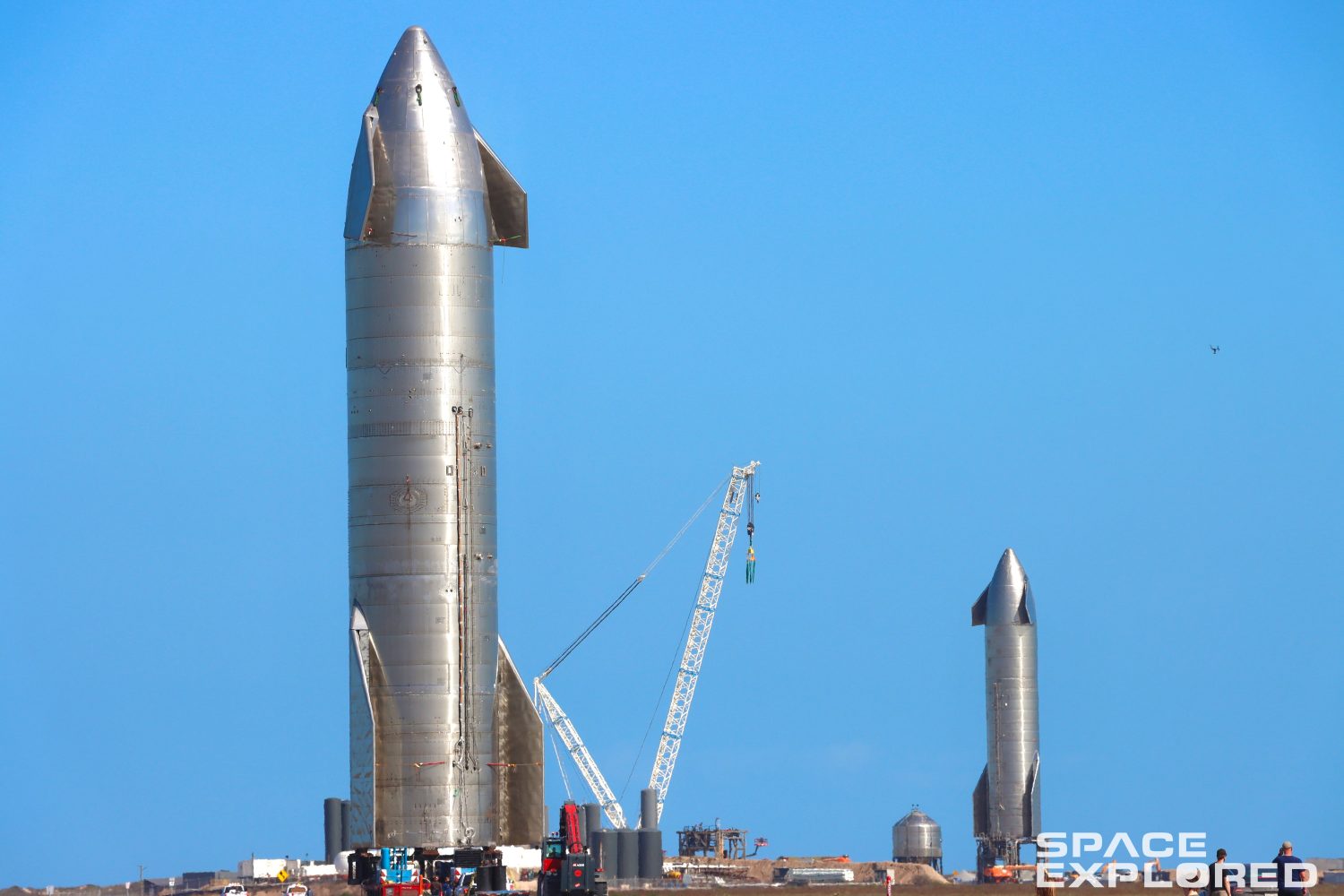
Last week SpaceX launched their SN9 Starship prototype to an almost fully successful flight only missing the landing due to issues relighting one of the two Raptor engines needed for the flip and landing maneuver. This is something Elon Musk has already hinted at a possible fix that we might see on their next prototype which has already begun test at their site in South Texas.
Earlier this week Elon Musk shared SpaceX’s three biggest priorities following the flight of SN9 and surprisingly has nothing to do with the issue that lead to SN9’s bang. It has more to do with the production of the Starship vehicles and the Raptor engines that power them.
Musk’s list had three items on it: “orbital tower that can stack, enough raptors for [an] orbital booster, improve ship & booster mass”. SpaceX seems to already have proven the manufacturing process for Starship vehicles with SN11 already finishing up processing in the High Bay with the next versions SN15 and SN16 not far behind.
Progress looks to be focusing on getting Starship to orbit and not concerned about getting the flip and landing maneuver working first. Work continues on the orbital launch mount just east of the well know suborbital launch mounts as well as the first Super Heavy booster, BN1, which is currently being stacked in the High Bay.
While high Starship production is good, it seems to have caught up or even surpassed the Raptor production rate. SpaceX installed Raptor SN50 on Starship SN10 earlier this week, a Raptor that was seen at SpaceX’s McGregor test site not that long ago. While Starship only requires 6 Raptors, 3 sea-level and 3 vacuum, the Super Heavy booster will need up to 28.
While early boosters might have only 2 or 4 engines for testing, getting a Starship to orbit around Earth will take much more and it doesn’t seem SpaceX has reached the production rate yet to handle that kind of demand.
SN10 Update
While future operations are focused on getting the infrastructure and hardware ready to get a Starship into orbit. Current operations at the South Texas spaceport are preparing SN10 for its flight test. Earlier this week SN10 received its 3 Raptor engines and began cryo-proof testing. This is where SpaceX fills the tanks with cryogenic nitrogen to test if the tanks can handle this cold of liquid.
We could see a static fire as soon as tomorrow since SpaceX has notified the residents of possible “space flight activities” happening between noon and 8 PM central. This alongside the appropriate TFR and road closure for tomorrow makes it look like a very good chance for it to happen.
While there were TFRs filed earlier in the week that put the first possible launch opportunity as Thursday with backup dates for Friday and Saturday. Those have been removed and no new TFRs have been filed to replace them. The best guess for when SN10 will fly is no earlier than next Monday if a successful static fire happens this week.
Enjoy reading Space Explored?
Help others find us by following on Apple News and Google News. Be sure to check us out on YouTube, Twitter, Facebook, and Instagram, join our Discord!
FTC: We use income earning auto affiliate links. More.

Comments